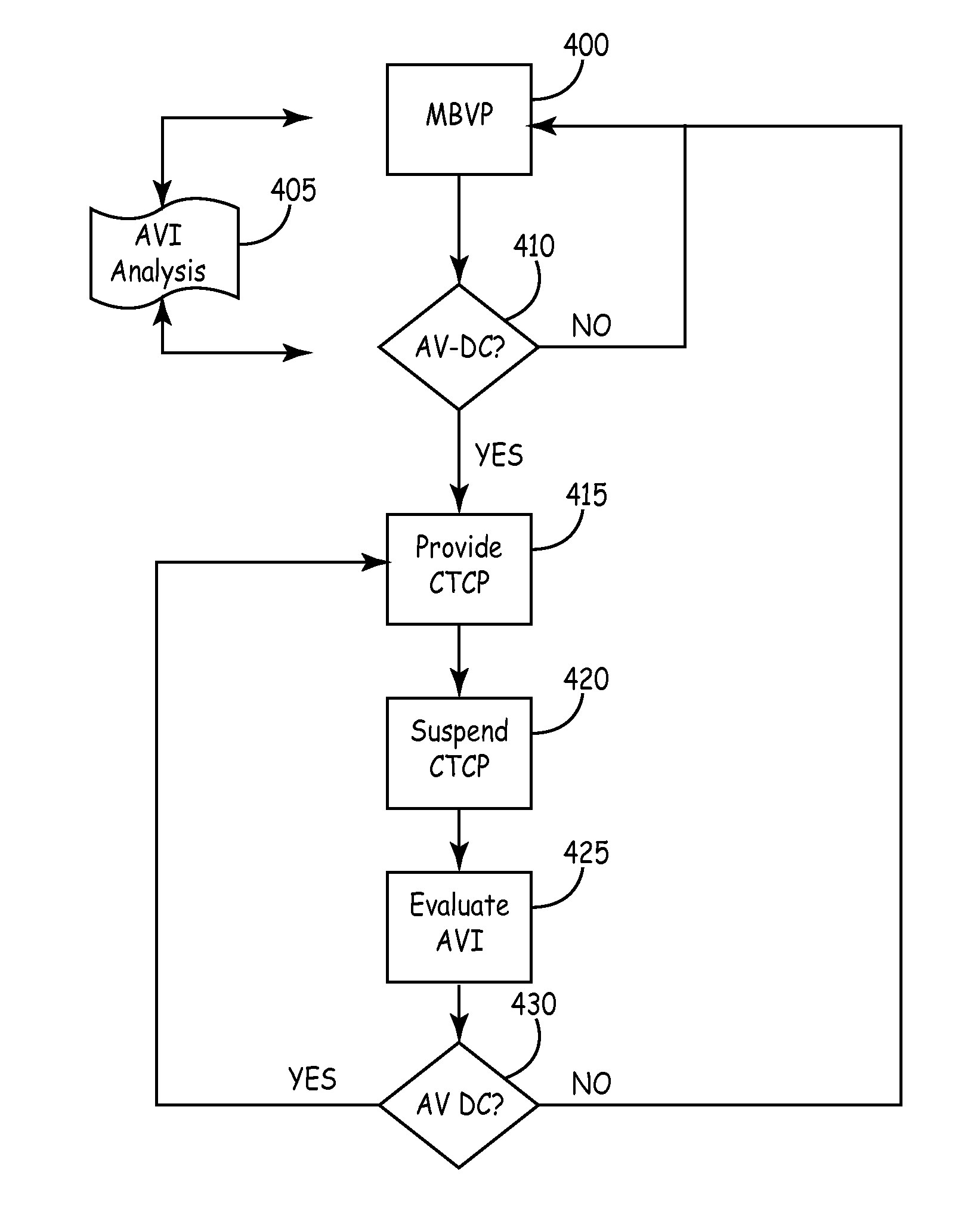System and method for conditional biventricular pacing
a conditional biventricular and pacing technology, applied in the field of implantable medical devices, can solve the problems of increased poor pump function, heart failure and death, etc., and achieve the effect of improving efficiency and reducing the risk of atrial fibrillation
- Summary
- Abstract
- Description
- Claims
- Application Information
AI Technical Summary
Benefits of technology
Problems solved by technology
Method used
Image
Examples
Embodiment Construction
[0020]FIG. 1 depicts an implantable medical device (IMD) embodied as a multi-chamber cardiac pacemaker or implantable pulse generator (IPG) 14. While an IPG is illustrated, it will be appreciated that embodiments may be provided that include and implantable cardioverter defibrillator (ICD) having pacing capabilities. The multi-chamber IPG 14 is configured to deliver pacing pulses to one or more heart chambers as needed to control the heart activation sequence or provide other therapy. The IPG 14 is shown in communication with patient's heart 10 by way of three leads 16, 32 and 52. The heart 10 is shown in a partially cut-away view illustrating the upper heart chambers, the right atrium (RA) and left atrium (LA), and the lower heart chambers, the right ventricle (RV) and left ventricle (LV), and the coronary sinus (CS) extending from the opening in the right atrium laterally around the atria to form the great cardiac vein 48, which branches to form inferior cardiac veins.
[0021]The IP...
PUM
 Login to View More
Login to View More Abstract
Description
Claims
Application Information
 Login to View More
Login to View More - R&D
- Intellectual Property
- Life Sciences
- Materials
- Tech Scout
- Unparalleled Data Quality
- Higher Quality Content
- 60% Fewer Hallucinations
Browse by: Latest US Patents, China's latest patents, Technical Efficacy Thesaurus, Application Domain, Technology Topic, Popular Technical Reports.
© 2025 PatSnap. All rights reserved.Legal|Privacy policy|Modern Slavery Act Transparency Statement|Sitemap|About US| Contact US: help@patsnap.com



